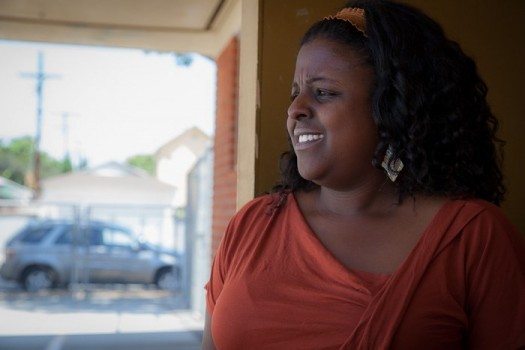

(They drive our trains and buses, teach our children, repair our roads and protect our safety. Public employees perform these and countless other jobs, although they remain mostly off the radar of the public they serve. With our new “Pro Publica” series, Frying Pan News presents the lives of these men and women front and center.)
After 10 years of marriage, Aisha Blanchard-Young’s husband is still shocked by the amount of time Aisha spends in her kindergarten classroom teaching. He jokes that if someone really wants to find out what it is like to be a teacher, they should talk to a teacher’s spouse. As a quality control technician for a stadium electronics company, he never has to take his work home. Aisha isn’t as lucky.
During the school year Aisha gets up at five in the morning to ready herself and the couple’s two boys (one 5 and one 2) for the day.
» Read more about: Aisha Blanchard-Young: A Passion for Teaching »


Last November unions won a resounding victory when voters defeated Proposition 32, a ballot measure that would have crippled labor’s political influence in California, partly by barring public-employee unions from using payroll-deducted funds for political purposes. The initiative, which enjoyed a huge lead in early opinion polls, was heavily funded by wealthy conservatives and far-right groups.
Union leaders were overjoyed by its defeat.
“You can’t buy California,” Dean Vogel, president of the California Teachers Association (CTA), told an election-night victory party in Sacramento. “We’re not for sale.”
The celebration hasn’t been long lived. In a little-noticed move in April, a conservative legal organization that has pushed to overturn the 1964 Voting Rights Act filed a lawsuit in federal court in Santa Ana that could accomplish in the courts what Prop. 32 couldn’t at the ballot box. The players behind the suit may not be household names but the millionaires and private foundations covering their legal fees represent a familiar klatch of extreme libertarians who,
» Read more about: Prop. 32 Ghost Looms Over Lawsuit Against Teachers Union »


For many Millennials, the present higher education system exudes an overwhelming sense of permanence. In our short lives, college tuition has always been high, education funding has always been decreasing, and college has always meant a risky “investment in our futures.” We know that these yearly tuition hikes are wrong, and that the current tuition rates already saddle us with debt we probably won’t pay off until we retire, if we retire. For many of us, the consequences are much more immediate, as many low-income students cannot afford higher education anymore. Yet we continue to shell out the money, or take out the loans. Confronted with the institutional power of the higher education system, we feel powerless.
Depressing, right? But history shows us that all is not lost by exposing the mechanisms that brought about the status quo. In their Fall 2012 article in Dissent, Aaron Bady and Roosevelt Institute Fellow Mike Konczal reveal what higher education used to mean and how it was systematically destroyed.
» Read more about: Millennials: Lower Expectations for Higher Education »


Thursday’s community meeting in the auditorium of Boyle Heights’ Lorena Street Elementary School was ostensibly a Los Angeles Unified School District briefing on why the school was about to share half of its classrooms and campus resources with a charter school.
The players were right out of Central Casting. To one side of Lorena Elementary’s podium stood LAUSD principal Enrique Soberanes — a rumpled, embattled Jaime Escalante-esque embodiment of an inner-city public school educator.
Opposite Soberanes, standing tall and lean and tanned was the impeccably tailored Dr. Jim Kennedy, looking more a William Morris Endeavor agent than the incoming principal of Walton Family Foundation-backed Extera Public School No. 2, the new K-1 charter school being imposed on Lorena Street as a co-locator.
Facing the principals were roughly 75 bewildered, mostly Spanish-speaking and working class parents, their children and a score of frustrated and angry LAUSD teachers.
» Read more about: “Co-Location” Controversy in Boyle Heights »
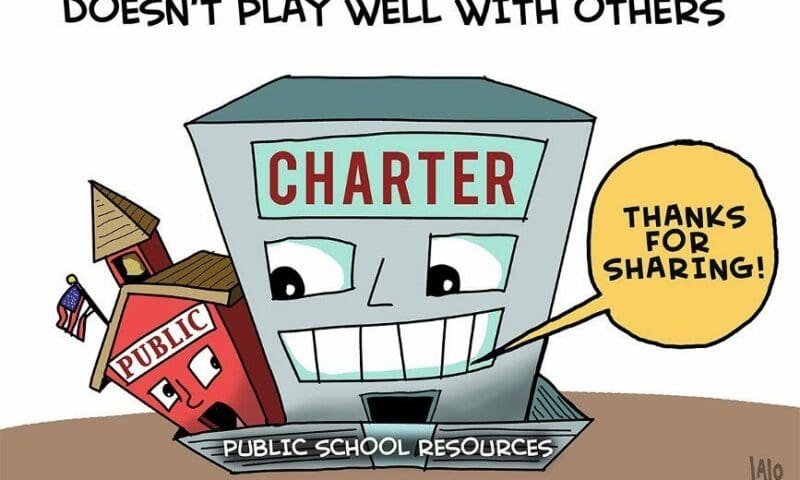

See Gary Cohn’s article, “Why Charter Schools Are Tearing Public Campuses Apart.”


For more than 30 years each, Cheryl Smith-Vincent and Cheryl Ortega have shared a passion for teaching public school in Southern California. Smith-Vincent teaches third grade at Miles Avenue Elementary School in Huntington Park; before retiring, Ortega taught kindergarten at Logan Street Elementary School in Echo Park. Both women have been jolted by experiences with a little-known statewide policy that requires traditional public schools to share their facilities with charter schools. Ortega says she has seen charter-school children warned against greeting non-charter students who attend the same campus. Smith-Vincent reports that she and her students were pushed out of their classroom prior to a round of important student tests – just to accommodate a charter school that needed the space.
“It was extremely disruptive,” Smith-Vincent says of the incident.
The practice of housing a traditional public school and a charter school on the same campus is known as “co-location.” Charters are publicly funded yet independently operated,
» Read more about: Why Charter Schools Are Tearing Public Campuses Apart »


Ever since the emergence of talking pictures, schools have been a major subject of both Hollywood movies and documentary films. One consistent theme of Hollywood portrayals of schools – from Blackboard Jungle (1955), Up the Down Staircase (1967) and Stand and Deliver (1988) to Mr. Holland’s Opus (1995), October Sky (1999) and Freedom Writers (2007) – has been the idealistic teacher fighting to serve his and her students against overwhelming odds, including uncaring administrators, cynical colleagues, a stultifying required curriculum that crushes the spirit of teachers and students alike, dilapidated conditions, budget cuts, unruly and hostile students, or students suffering from the symptoms of poverty or neglect. The underlying message is that while occasionally a rare teacher can light a spark in a few students, our public schools are failing most of the students they are supposed to serve. Most documentaries about education –
» Read more about: A Harsh Schooling: The War Against Public Education »
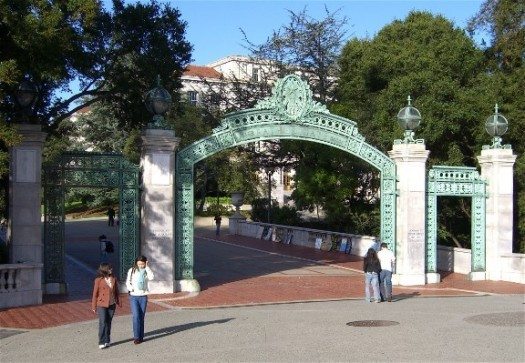

Two decades ago, this week’s report that New York University President John Sexton got a $1 million loan from the school to purchase a Fire Island vacation home would have been a national scandal. Today, it is a sign of the times. As young people graduate college facing crushing debt, college presidents, even in public schools like the University of California, are living high on the hog. NYU alone has given over 100 faculty large loans, and its former law school dean got $5.7 million for a townhouse in the West Village and a 65-acre second home in rural Litchfield County.
This disconnect between economically struggling students and privileged college presidents is deplorable. Yet school’s governance by elite-dominated boards perpetuates this staggering inequality. Activists need to find ways to prevent students from subsidizing these lavish administrator salaries, and legislation, civil disobedience and public shaming may all be necessary.
Slash Schools,
» Read more about: College Presidents Are Treated Like Wall Street CEOs »


“Work hard. Get good grades. Go to a good school and you will be successful.” Our generation has been told time and again that through hard work and dedication, we will be able to live happy lives, have secure jobs, and start families built on comfortable finances. But on the day of action around student debt, it [was] clear we need more than these easy answers to help Millennials cope with the growing burden of education costs.
I come from a middle class family. Both of my parents served in the Marine Corps and got good jobs. My father works in law enforcement, and my mother is a teacher. They taught me that if I put in hard work, I would reap the results. So, I graduated at the top of my class in high school and went to a top (public) university. I worked all four years of college and graduated on time.


Last month, the Walton Family Foundation, led by heirs to the Walmart fortune, announced an $8 million grant to StudentsFirst, headed by Michelle Rhee, the ousted chancellor of the Washington, D.C. school system. This grant came on top of the $3 million the foundation had already donated to the group since 2010.
Rhee’s tempestuous tenure as head of the D.C. schools between 2007 and 2010 left behind a legacy of alleged cheating on standardized tests, a demoralized teaching staff with high turnover and an increased achievement gap between low- and upper-income children. Soon after she left that job, she started StudentsFirst, which is now based in Sacramento, and has operations in 18 states. It recently donated $350,000 to LAUSD [Los Angeles Unified School District] school board races, backing candidates who support its agenda of high-stakes testing, private charter schools and school vouchers. Nicholas Lemann’s devastating profile of Rhee in the current issue of the New Republic exposes her misguided and hypocritical educational agenda.
» Read more about: Walmart Can Improve Our Schools by Paying Living Wages »
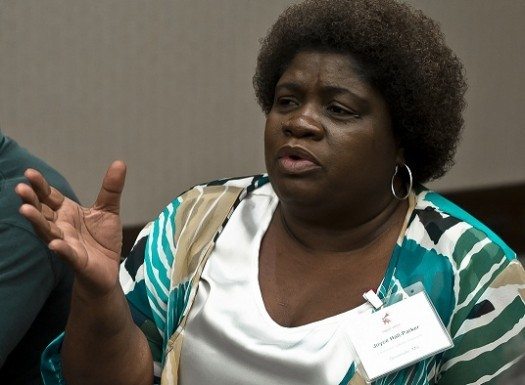

When it comes to schools and kids, progress might actually just involve a unified push from everyone in a community – no matter how hard it looks.
That’s the view of Joyce Parker, an energetic and passionate resident of Greenville, Mississippi. She is the director of Citizens for a Better Greenville (CBG), an organization that works with some of the lowest wealth communities in the city of about 38,000 residents.
She and the families with whom she works engage residents to participate in community-building programs, especially for youth, advocate for quality education and become empowered in civic affairs. She has a deep dedication to improving education for African Americans.
Earlier this month, President Barack Obama proclaimed May 5 to 11 as “National Charter Schools Week,” giving a nod to what many see as educational flexibility and “widening the circle of opportunity for students who need it most.”
Parker and other Greenville residents are moving forward on a grassroots educational plan of their own.
» Read more about: Mississippi Learning: An Alternative to Charter Schools »


College student leaders from across California reacted to the President’s budget on April 10, calling on Congress to extend the low interest rate and give students time to weigh in on more comprehensive reform. Last year, Congress temporarily extended the low rate for one year, which saved close to eight million students $1,000 per loan borrowed. California Public Interest Research Group (CALPIRG) leaders, working in coalition with many student advocacy groups and education groups led the charge to make sure that Congress didn’t double our rates last year, with the deadline looming once again, we are calling on these same decision makers to step up again this year.
The President released a budget that included a proposal for preventing the student loan interest rate from doubling this July 1.
“Unfortunately, the President’s proposal lowers interest rates now by charging more from student borrowers down the road,” said Roshni Ashok,
» Read more about: White House Budget Leaves Students in the Lurch »


At first glance, it is one of the nation’s hottest new education-reform movements, a seemingly populist crusade to empower poor parents and fix failing public schools. But a closer examination reveals that the “parent-trigger” movement is being heavily financed by the conservative Walton Family Foundation, one of the nation’s largest and most strident anti-union organizations, a Frying Pan News investigation has shown.
Since 2009, the foundation has poured more than $6.3 million into Parent Revolution, a Los Angeles advocacy group that is in the forefront of the parent-trigger campaign in California and the nation. Its heavy reliance on Walton money, critics say, raises questions about the independence of Parent Revolution and the intentions of the Walton Family Foundation.
(See interactive infographic, left, for donations from 2009 through March, 2013. Sources: Parent Revolution; foundation tax returns; foundation grant reports.)
While Parent Revolution identifies the Walton Family Foundation as one of several donors on its Web site,
» Read more about: Public Schools, Private Agendas: Parent Revolution »
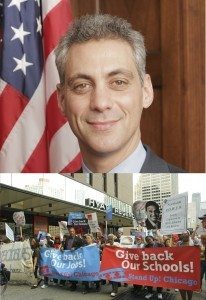

Sometimes you have to just love the California state constitution. It may right now be the one thing protecting us from the chaos inflicted on Chicago, where the largest mass closure of public schools in U.S. history is underway.
You might remember when Antonio Villaraigosa was first elected Mayor of Los Angeles. One of his first ambitions was to become the decision-maker over the L.A. Unified School District, to once-and-for-all improve the city’s schools. He wanted to have the power of other big-city mayors like Chicago’s Emanuel and Bloomberg in New York, mayors who now appoint their school boards and their school superintendents.
These two men, with scant education experience, were sure they could do better than life-long educational professionals. They had been elected to run their cities, not their cities’ schools. But, hey, ambition knows no limits. And with the backing of the multimillionaires of the Gates, Broad and Walton foundations,
» Read more about: School Daze: The Attack on Public Education Continues »
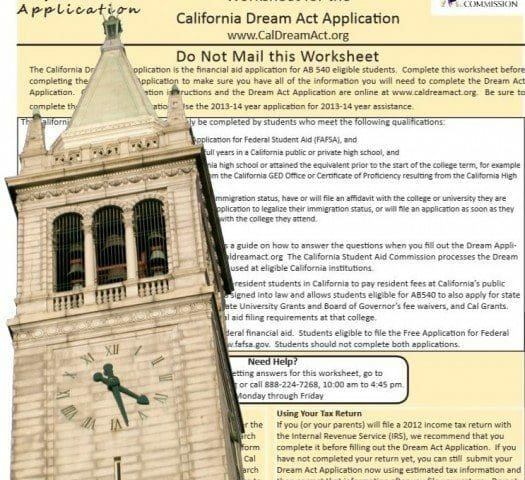
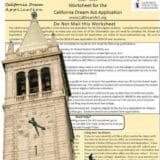
The California Dream Act went into effect on Jan. 1, allowing thousands of immigrant students a chance for the first time to apply for state financial aid to help pay tuition at state colleges and universities.
Within hours of going live, the online application system was overwhelmed by applicants and shut down.
“It was the first time the California Dream Act was implemented and we had some bugs,” said Patti Colston, a spokeswoman for the California Student Aid Commission.
“As soon as we found out, we contacted and notified students. To make sure their privacy was protected, we asked about 1,000 students to resubmit their applications,” she said, adding that no applications were lost.
By the March 2 deadline, 20,000 applications were received, said Colston. So far, 3,600 financial awards have been made to Dream Act-eligible students, averaging about $4,000 each. Applications are still being processed.
» Read more about: This Dream Is No Act — California Aids Immigrant Students »


Even as the new documentary A Place at the Table highlights in heart-wrenching fashion the plight of 16 million U.S. children who don’t know where their next meal is coming from, some want to end a safety net that for decades has stood between some kids and a slow death from malnutrition – the school meal program. Think starvation can’t happen here, in one of the richest countries on earth? Think again. Not only could U.S. children starve without school meals, but not all that long ago, they did.
Terence Jeffrey, editor in chief of CNSnews.com, argues in an article entitled “Sixty-four Percent of Schoolchildren Fed on Federal Subsidies” that the federal school lunch program is “a weapon liberals employ in their war against the family.” This bizarre idea is based on data he presents which allegedly show a correlation between the increasing number of children eating government subsidized school meals since 1969,
» Read more about: Reporting on Hunger in Schools: Let Them Eat “Balance” »


Janice Slaughter often takes her 19-month-old granddaughter to the Tiny Tots child care center in Jackson, Mississippi, or picks her up in the afternoon so that her daughter, the baby’s mother, can attend school.
Slaughter brought her own children to the same center when they were babies and has known the owner for years.
But, soon, she and her daughter, who receives a federally funded child care subsidy administered by the state, will be required to scan their fingers on a device at Tiny Tots whenever they bring in the baby or pick her up. Everyone else will just walk right in and out.
Susan Williams scans her finger when she picks her daughter up from child care in Jackson, Mississippi. “I don’t mind it, but I really don’t see the point in it, I don’t understand why it’s necessary,” she said. “You have to stand in line and wait for it.”
“It’s inconvenient,
» Read more about: Fingerprinting Indigent Mothers and Other Shaming Rites »


For years, Los Angeles has been ground zero in an intense debate about how to improve our nation’s education system. What’s less known is who is shaping that debate. Many of the biggest contributors to the so-called “school choice” movement — code words for privatizing our public education system — are billionaires who don’t live in Southern California, but have gained significant influence in local school politics. New York Mayor Michael Bloomberg’s recent contribution of $1 million to a political action committee created to influence next week’s LAUSD school board elections is only the most recent example of the billionaire blitzkrieg.
For more than a decade, however, one of the biggest of the billionaire interlopers has been the Walton family, heirs to the Walmart fortune, who have poured millions into a privatization-oriented, ideological campaign to make L.A. a laboratory for their ideas about treating schools like for-profit businesses,
» Read more about: Walmart Heirs Spend Millions to Privatize L.A. Schools »
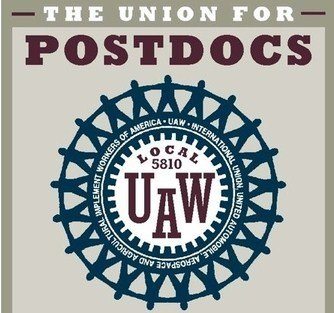
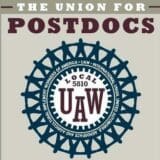
For the thousands of international students and researchers who come to U.S. universities each year, the academy is seen as a beacon of opportunity, where the people who work the hardest and [have] the best ideas rise to the top.
[To] a union representing more than 6,000 postdoctoral scholars (also known as “postdocs”) at the University of California, this promise means something – the majority of our members are immigrants working in the U.S. on guest worker visas, and they are here because they have worked for years to reach the forefront of biology, physics, engineering and other fields. They have already earned PhDs, and come to UC to perform cutting-edge research – think breakthrough cancer therapies, new models for the origin of the universe, stem cell research and more.
Imagine their surprise when after arriving at UC, they are told that although the contract the union negotiated states that health care coverage is available to all postdocs,
» Read more about: University Postdocs Demand Health Care Rights »


The following infographic first appeared with frugaldad.com‘s “College Isn’t Cheap” post and is republished with permission.